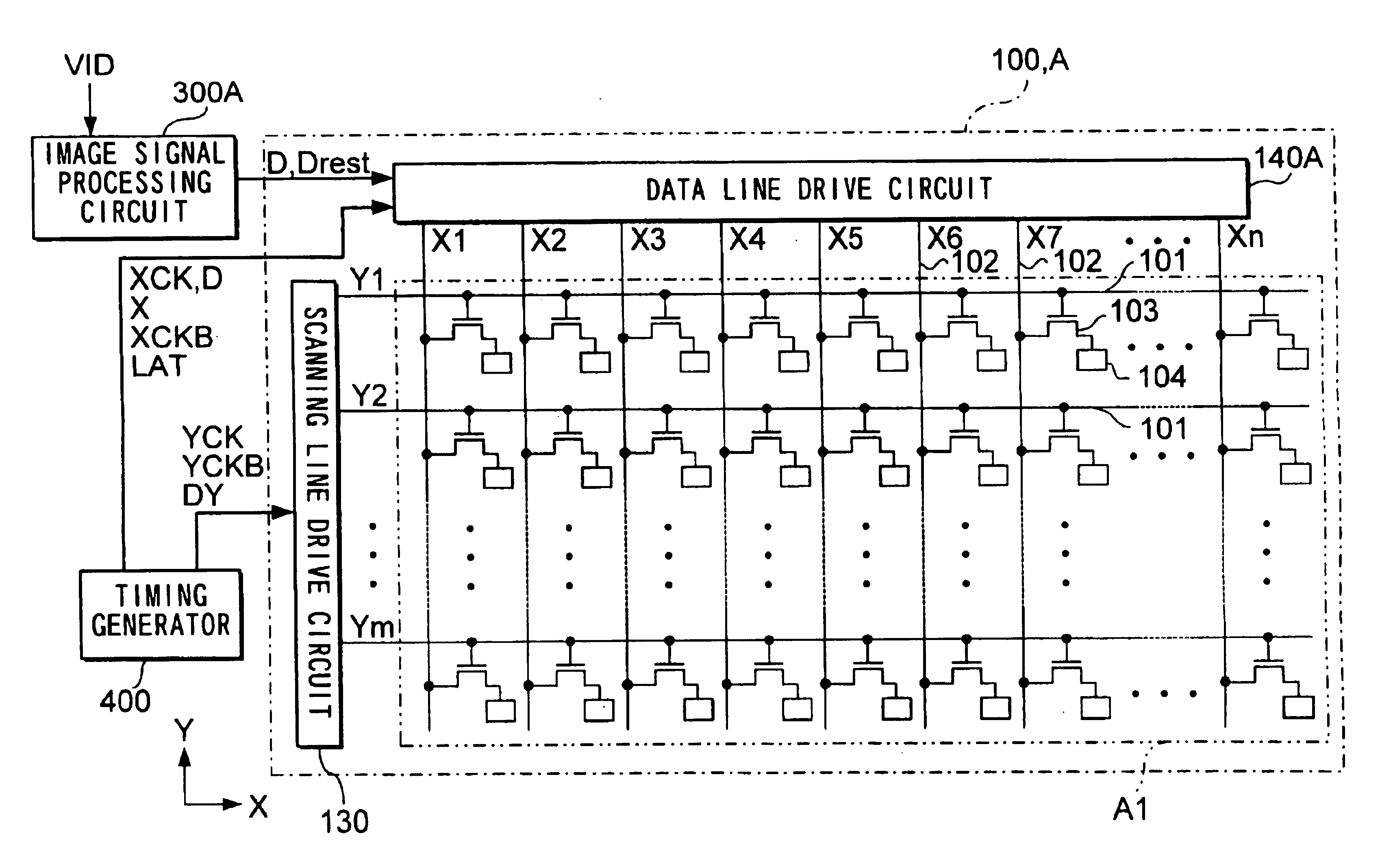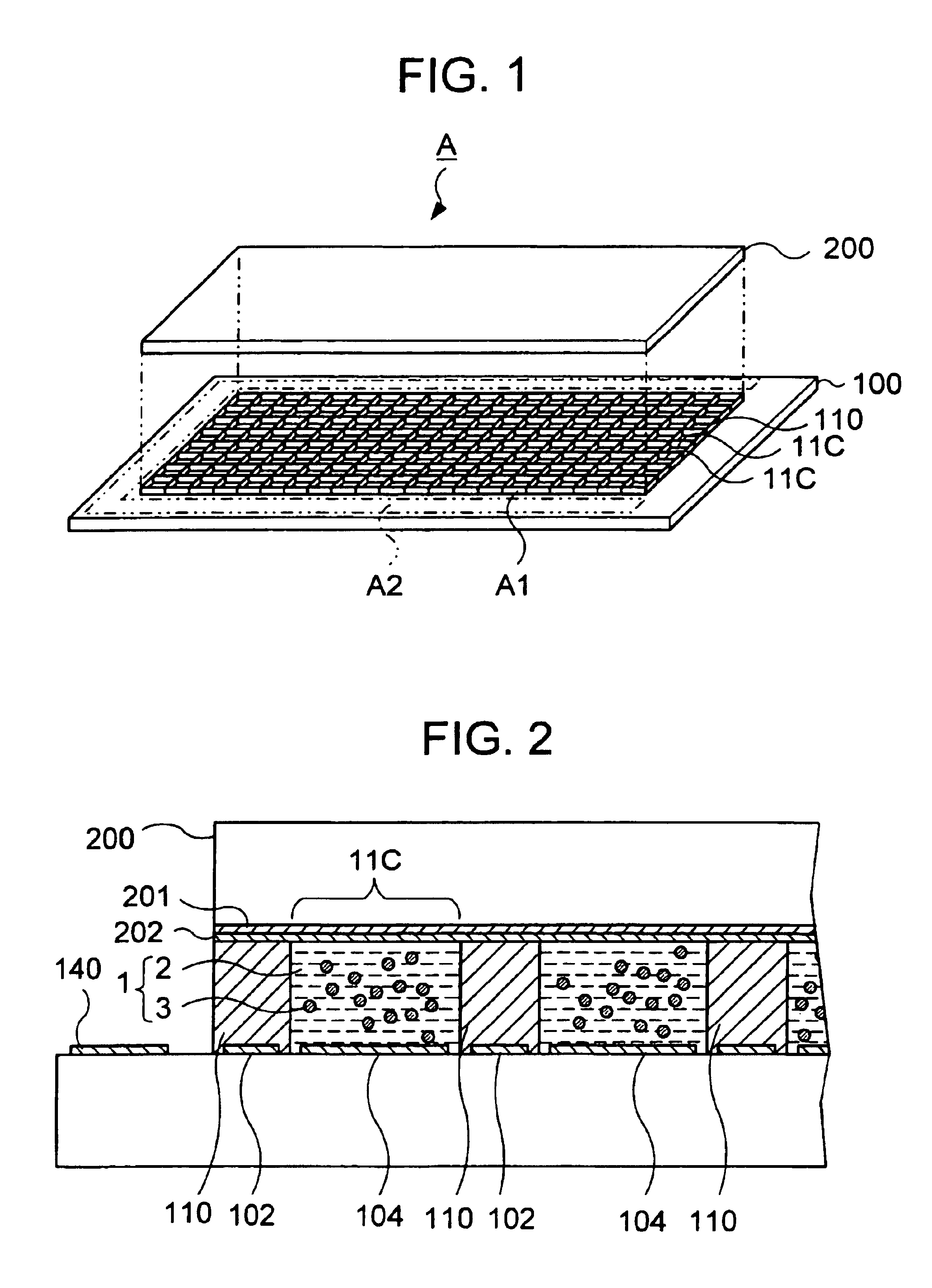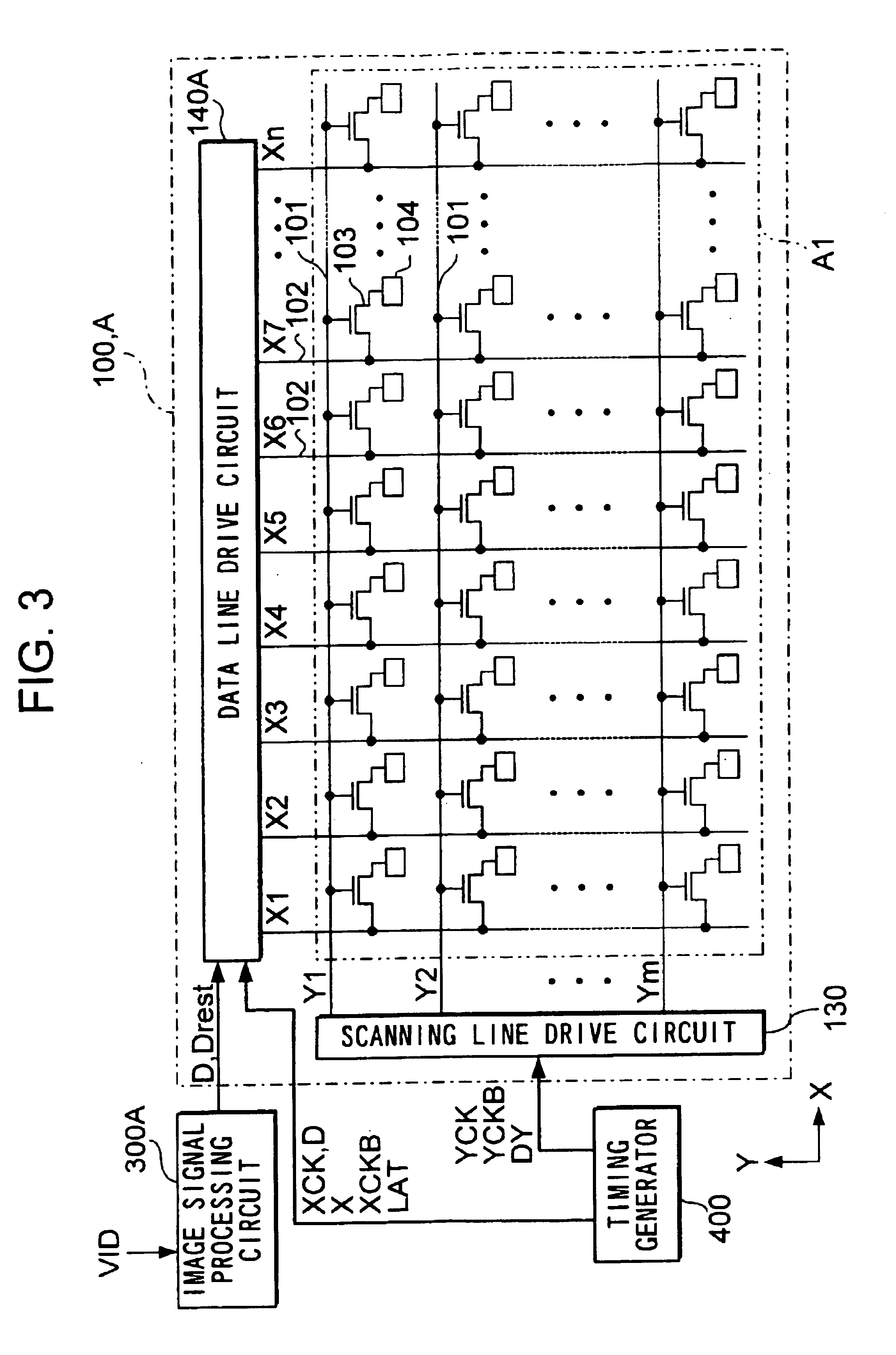Method and circuit for driving electrophoretic display, electrophoretic display and electronic device using same
a technology of electrophoretic display and electrophoretic display, applied in the field of electrophoretic display, can solve the problems of poor viewing characteristics and prior art electrophoretic display, and achieve the effect of improving display image characteristics
- Summary
- Abstract
- Description
- Claims
- Application Information
AI Technical Summary
Benefits of technology
Problems solved by technology
Method used
Image
Examples
first embodiment
[0058](A) First Embodiment
[0059]An electrophoretic display of the present embodiment displays an image according to an input image signal (VID). It is able to display both static and animated images, but is particularly suited to displaying static images.
[0060](A-1) Outline of an Electrophoretic Display
[0061]FIG. 1 is an exploded perspective view showing the mechanical configuration of an electrophoretic display panel A, according to the first embodiment of the present invention.
[0062]FIG. 2 is a partial sectional view of the panel.
[0063]As shown in FIGS. 1 and 2, an electrophoretic display panel A has an element substrate 100 and an opposing substrate 200. Element substrate 100 is made of glass, a semiconductor or some other suitable material. Opposing substrate 200 is made of glass or some other suitable transparent material. A common electrode 201 is formed on opposing substrate 200. A plurality of pixel electrodes 104 are formed on element substrate 100 to constitute a plurality...
second embodiment
[0143](B) Second Embodiment
[0144]In the above embodiment, rewriting is carried out in a way that after a reset operation as shown in FIG. 16A is carried out, then a writing operation is carried out shown in FIG. 16B to renew a displayed image. In this case, the positions of the pigment particles 3 are initialized in displaying a subsequent image. In the case that dielectric fluid 2 is colored black and the pigment particles 3 are colored white, a black out occurs across the entire image. However, if a change in image is effected sufficiently rapidly, it will not be visible to the naked eye. Nevertheless there is a case that the resetting operation needs a long time according to physical property of the dispersal system 1, which results in the fact that change of the brightness in initializing the pigment particles 3 can be detected.
[0145]In order to deal with the above situation, it is possible that the voltage which corresponds to the difference between the average position to be d...
third embodiment
[0161](C) Third Embodiment
[0162]In the first embodiment, as described before, after the gradation voltage is applied to the pixel electrodes 104 to move the pigment particles 3 by the distance correspondent to the gradation to be displayed, the common voltage Vcom is applied to the pixel electrodes 104 not to apply any electrostatic field to the particles 3. Additionally, the image data D is compensated at the image signal processing circuit 300A before outputting taking the inertia into consideration, in case of small fluid resistance of the dielectric fluid, which means that the particles 3 continue to move under inertia.
[0163]However, it can take a considerable time for pigment particles 3 to become stationary depending on the level of fluid resistance encountered in dielectric fluid 2. In the above example, since pigment particles 3 migrate away from pixel electrodes 104 to the common electrode, if there is little fluid resistance the image displayed will not reach optimum brigh...
PUM
 Login to View More
Login to View More Abstract
Description
Claims
Application Information
 Login to View More
Login to View More - R&D
- Intellectual Property
- Life Sciences
- Materials
- Tech Scout
- Unparalleled Data Quality
- Higher Quality Content
- 60% Fewer Hallucinations
Browse by: Latest US Patents, China's latest patents, Technical Efficacy Thesaurus, Application Domain, Technology Topic, Popular Technical Reports.
© 2025 PatSnap. All rights reserved.Legal|Privacy policy|Modern Slavery Act Transparency Statement|Sitemap|About US| Contact US: help@patsnap.com



